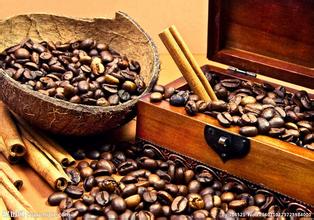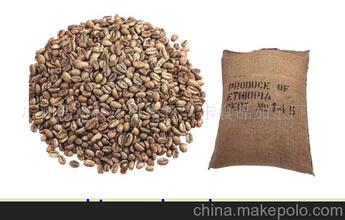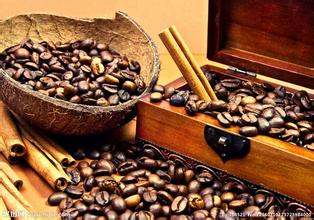Introduction to the flavor description of extremely hard coffee beans in Jasmine Manor in Guatemala
Introduction to the flavor description of extremely hard coffee beans in Jasmine Manor in Guatemala
Guatemala is bordered by Mexico to the north, Honduras and El Salvador to the south, the Caribbean to the east and the Pacific Ocean to the west, with tropical rain forests, volcanic geology, plateau valleys and changeable microclimate. Guatemalan coffee once enjoyed a reputation as the best quality coffee in the world. The extra-hard coffee beans here are full-grained, delicious and balanced, and the coffee made with it is pure and rich. There are few places in the world that offer a variety of high-quality coffee beans like those produced in Guatemala. The excellent quality of Guatemalan coffee beans is due to the unique conditions of their producing areas, including different climate change in each region, rich soil formed by volcanoes, abundant natural water resources, high-altitude mountains and shady and moist forests. Guatemala has seven major coffee producing areas: Antigua,Coban,Atitlan,Huehuetenango,Fraijanes,Oriente and San Marcos. The coffee beans in each producing area have their own characteristics, and they have won a lot of praise for Guatemala in the international community, especially the perfect coordination of the sour, sweet and mellow texture of Antigua; with a touch of smoke and a little more emphasis on its mystery, you will have a reason not to look for alternatives everywhere after tasting. Here, the slopes of Sierra Madre volcano provide ideal conditions for growing high-quality coffee beans, and coffee growing at high altitudes is full of vitality. Compared with other kinds of coffee, tasters prefer this mixed flavor coffee with spicy flavor. The extra-hard coffee beans here are a rare good coffee with full grains, delicious taste and balanced acidity. In addition, Guatemala has attracted a lot of attention because of its giant coffee beans. Antigua is a famous producer of coffee. Antigua coffee is produced in Hacienda Carmona, where the best quality coffee is EL Pulcal, which is not only of good quality, but also has a stronger flavor, richer taste and stronger tobacco flavor than other Guatemalan coffee. Every 30 years or so, the area near Antigua is hit by a volcanic eruption, which provides more nitrogen to the already fertile land, and plenty of rainfall and sunlight make the place more suitable for growing coffee. Other coffee producers include San Marco, Oriente & Coban, Palcya, Mataquescuintia and La Uman in Sakapa.
Bitter and fragrant, good taste
The coffee produced in the highland is mellow and has a good sour taste, which is well received and is the best material for mixed coffee.
Coffee varieties:
Arabica species (Arabica):
It accounts for 85% of total coffee production, including Brazil, Colombia, Guatemala, Ethiopia and so on. The beans are turquoise, thin and small, with special aroma and sweet acid, which is good to drink with other coffee. Excellent quality, more suitable for public taste.
Robada species (Robusta):
Roughly planted in Java, Indonesia, drought-resistant and insect-resistant; bitter taste, but bitter with fragrance, especially after cooling with a unique sweet taste, suitable for the preparation of cold coffee, mellow and extremely bitter.
Liberia plus species (Leberica):
The quantity of this variety is very small, most of it is used to synthesize coffee and make coffee essence, it is difficult to see in the market, the quality is not good, and the flavor of the single product is not good.

Important Notice :
前街咖啡 FrontStreet Coffee has moved to new addredd:
FrontStreet Coffee Address: 315,Donghua East Road,GuangZhou
Tel:020 38364473
- Prev

Introduction to the method of Variety treatment in Coffee Bean Flavor description region of Colombia sierra navada
Columbia sierra navada Coffee Bean Flavor description Variety treatment method introduces the pure taste of Colombian coffee, which comes from Colombia's natural environment with the most favorable conditions for coffee growth. But beyond that, it is inseparable from the hard work of local growers. In Colombia, the planting area of coffee has reached 1.07 million hectares, with about 302000 coffees in the country.
- Next

Ethiopia Yega Shefi g2 washed coffee bean cup flavor description region introduction
Ethiopia Yegashefi g2 washed coffee cup flavor description of the region Yegashefi is a small town, 700-2100 meters above sea level, is synonymous with Ethiopian fine coffee It is a wetland since ancient times, and the old saying Yirga means to settle down, and Cheffe means wetland. The way coffee is produced here and the flavor is too prominent to cause Ethiopian coffee
Related
- Detailed explanation of Jadeite planting Land in Panamanian Jadeite Manor introduction to the grading system of Jadeite competitive bidding, Red bid, Green bid and Rose Summer
- Story of Coffee planting in Brenka region of Costa Rica Stonehenge Manor anaerobic heavy honey treatment of flavor mouth
- What's on the barrel of Blue Mountain Coffee beans?
- Can American coffee also pull flowers? How to use hot American style to pull out a good-looking pattern?
- Can you make a cold extract with coffee beans? What is the right proportion for cold-extracted coffee formula?
- Indonesian PWN Gold Mandrine Coffee Origin Features Flavor How to Chong? Mandolin coffee is American.
- A brief introduction to the flavor characteristics of Brazilian yellow bourbon coffee beans
- What is the effect of different water quality on the flavor of cold-extracted coffee? What kind of water is best for brewing coffee?
- Why do you think of Rose Summer whenever you mention Panamanian coffee?
- Introduction to the characteristics of authentic blue mountain coffee bean producing areas? What is the CIB Coffee Authority in Jamaica?

